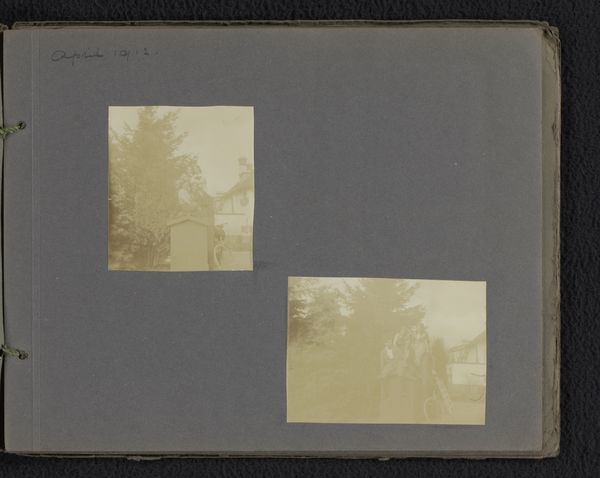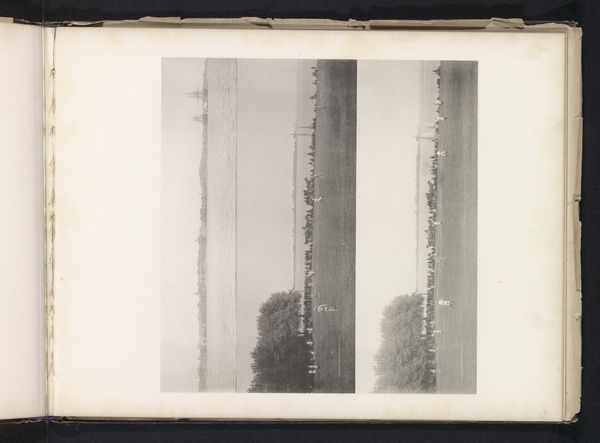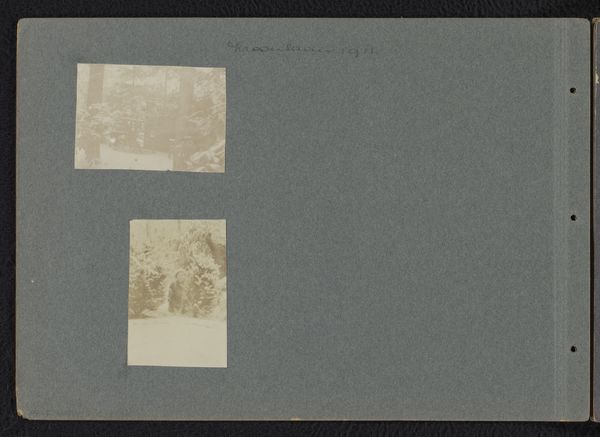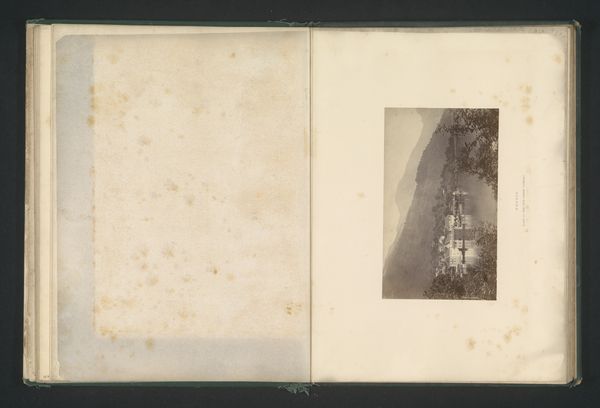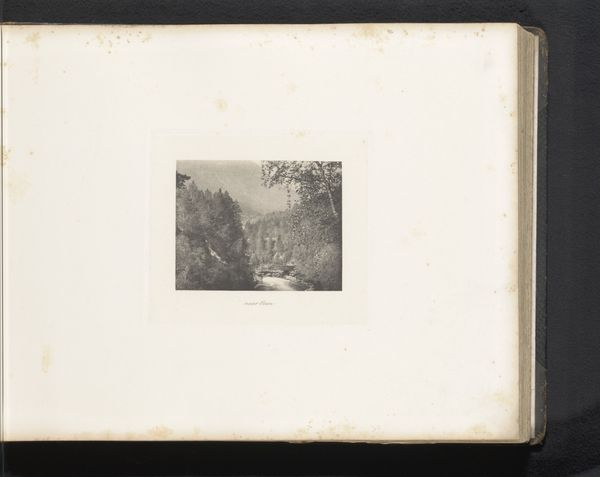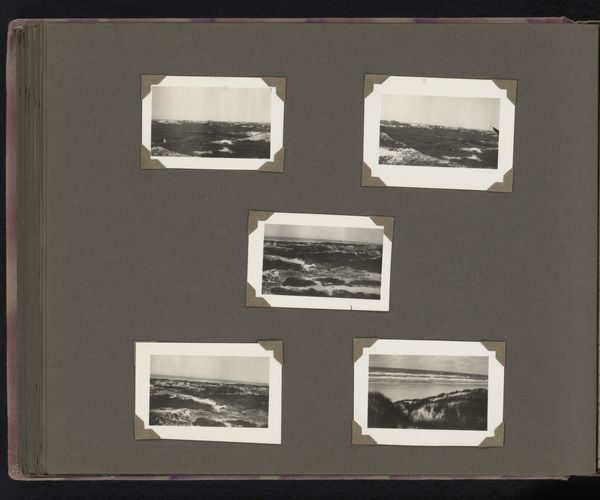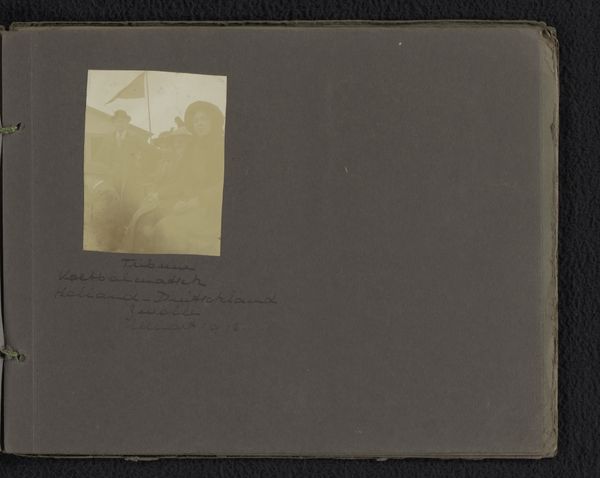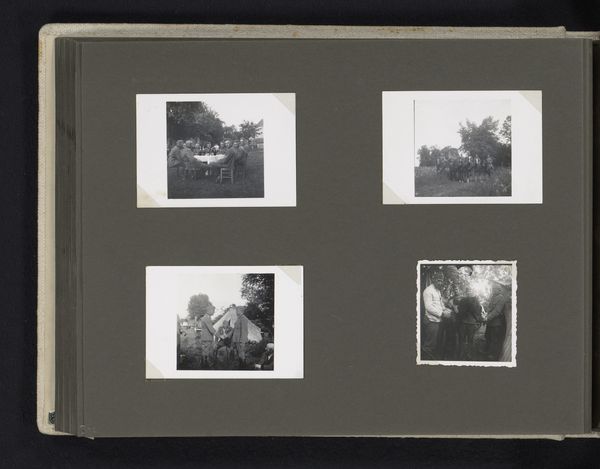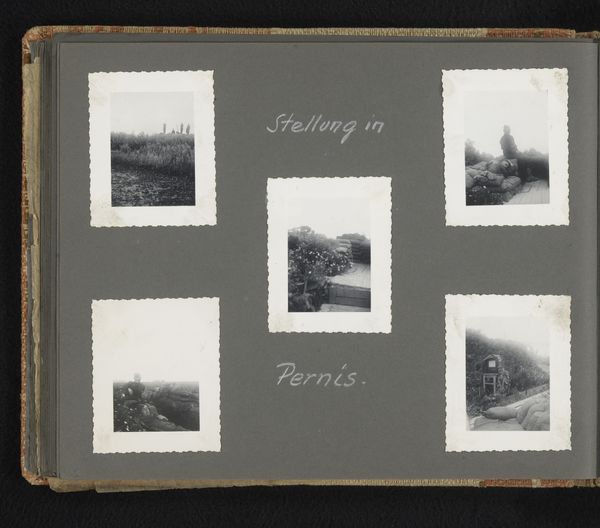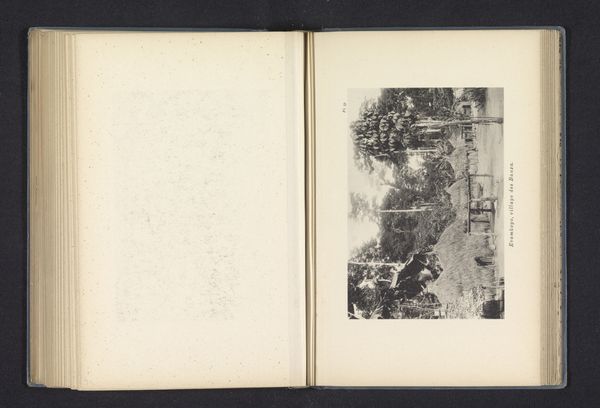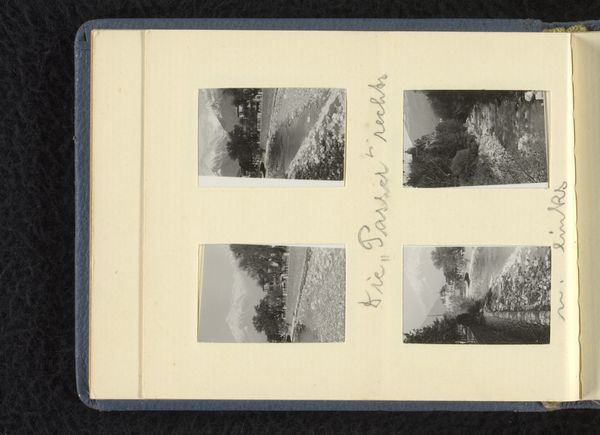
photography, gelatin-silver-print
#
landscape
#
photography
#
gelatin-silver-print
#
realism
Dimensions: height 60 mm, width 90 mm, height 210 mm, width 260 mm
Copyright: Rijks Museum: Open Domain
Curator: Here we have an intriguing gelatin silver print titled “Duitse oorlogsschepen,” or "German Warships," taken sometime between 1940 and 1941. It's part of the Rijksmuseum's collection. What are your first thoughts? Editor: Stark, almost melancholic. The composition of the three framed gelatin silver prints creates a sense of quiet observation. There's a visual weight to the dark, foreground foliage that almost dwarfs the subject in the distance. Curator: Right, the artist, Anonymous, it is intriguing because of the layering involved: the page the handwriting. Given the dates, it makes one think of the Nazi occupation. One must assume the paper would be harder to acquire, perhaps. A snapshot from an occupied territory. Editor: Exactly. It also makes me wonder about the gelatin silver process itself in this context. How readily available were the materials? Was it a subversive act to document these ships, a form of resistance utilizing accessible technology? Curator: The material fragility heightens the image’s poignancy. We look at these gelatin silver prints on a worn album page and they are testaments. The formal contrast, the ships as symbols of power against the anonymous plants as quiet witnesses... Editor: Formally, the horizontal lines of the water and the distant ships create a static, almost suffocating space. It’s like a visual representation of the occupation itself – a heavy, immovable presence. Curator: I see how you infer meaning from its layout, and the photographer’s situation would've influenced access and artistic freedom. What does it tell us about how people find ways to document, to record history, under duress? The choice of subject matter alone speaks volumes. Editor: Yes, this work creates tension between the visible, the warships in grayscale, and what is unseen: the daily life of the Dutch under occupation. It also speaks to how even realism, through the choices of its presentation, becomes inherently symbolic. Curator: Ultimately, this photographic record reveals not just the presence of German warships, but also resilience of the human spirit to remember. Editor: I agree. The beauty of form intertwines with social memory; offering potent commentary on history.
Comments
No comments
Be the first to comment and join the conversation on the ultimate creative platform.
